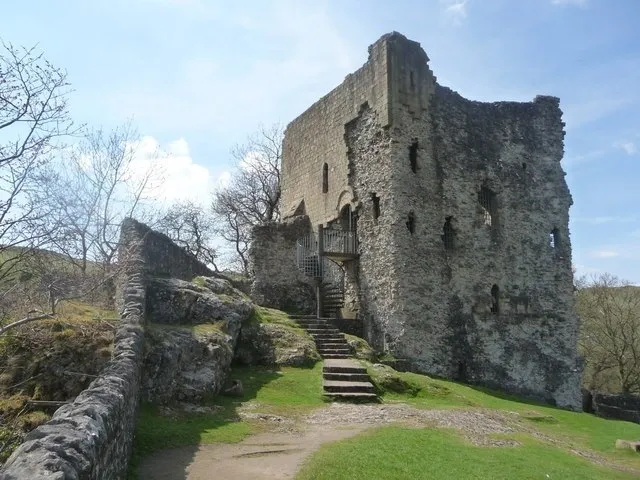Perched atop a limestone hill, gazing over the charming village of Castleton in Derbyshire, England, Peveril Castle stands as a silent sentinel, bearing witness to centuries of history. This medieval stronghold, with its sweeping vistas of the Peak District, weaves a tale of regal authority, tactical significance, and the enduring allure of medieval architecture.
The narrative of Peveril Castle unfolds in the aftermath of the Norman Conquest of England in 1066. Following the conquest, William the Conqueror bestowed the extensive lands of the Peak District upon his loyal knight, William Peveril. In response, Peveril initiated the construction of the castle around 1070, laying the foundation for a fortress that would leave an indelible mark on the region’s narrative.

Positioned strategically at the head of the Hope Valley, Peveril Castle assumed a pivotal role as a defensive bastion for medieval rulers. Its elevated perch afforded sweeping views of the surrounding landscapes, rendering it a formidable stronghold against potential invaders. Moreover, the castle held sway over the passage through the Peak District, exerting control over trade and movement in the region.
Throughout the ages, Peveril Castle changed hands numerous times, including falling under the purview of the Crown. King John, renowned for affixing his seal to the Magna Carta in 1215, oversaw the maintenance of the castle and implemented significant enhancements, bolstering its defensive capabilities. This continued royal ownership underscored the enduring strategic significance of the castle.


The architectural features of Peveril Castle vividly illustrate its military-oriented construction. The curtain wall, keep, and towers epitomize Norman military design principles. Of these, the keep stands out as a formidable structure, boasting thick walls and arrow slits, providing a fascinating glimpse into the medieval approach to defensive architecture.
Throughout history, Peveril Castle played a part in several significant events. It became a focal point during the Anarchy, a 12th-century civil war, witnessing multiple changes in ownership. Additionally, it found itself embroiled in conflicts during the Wars of the Roses in the 15th century. Despite its strategic significance, Peveril Castle didn’t see major military engagements and is instead celebrated for its symbolic representation of authority.

As the medieval era yielded to more peaceful times, Peveril Castle’s military importance waned. By the 17th century, the castle had fallen into disrepair, becoming a picturesque ruin that inspired romanticism among artists, poets, and later, tourists exploring the scenic wonders of the Peak District.


Today, Peveril Castle is under the care of English Heritage, welcoming visitors to wander through its remnants. Tourists can explore the castle’s remains, ascend to the hilltop for breathtaking vistas, and delve into the rich history resonating within its ancient stones. Interpretive displays offer insights into the castle’s medieval life and significance, guiding visitors through its storied past.
Peveril Castle, with its weathered façade and imposing stance, transcends mere ruin; it stands as a guardian across the ages, a testament to the strategic foresight of medieval craftsmen. As dusk settles over Castleton and shadows dance along the castle’s walls, Peveril Castle endures as a poignant reminder of England’s medieval legacy, a sentinel forever perched upon the Derbyshire hills.


